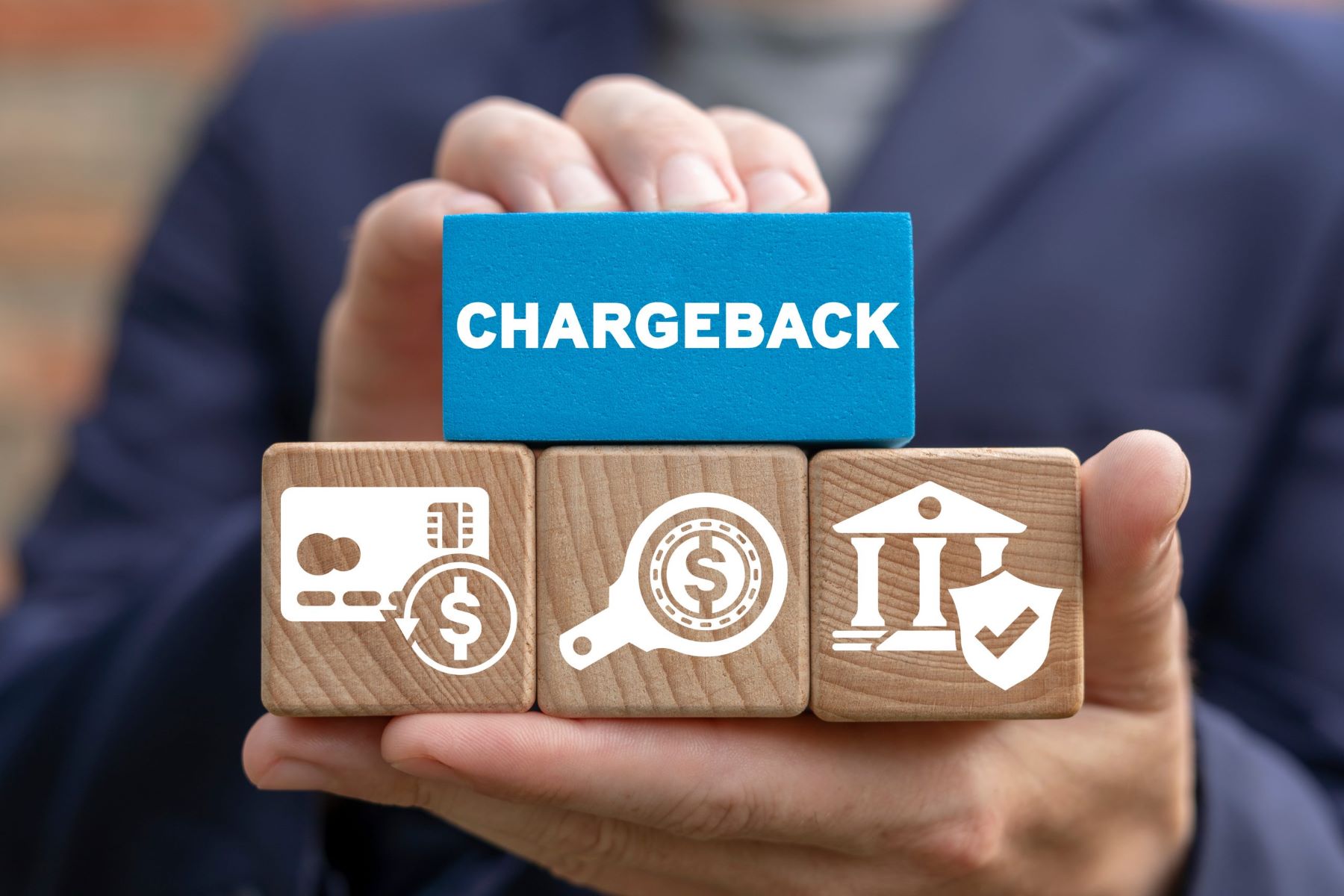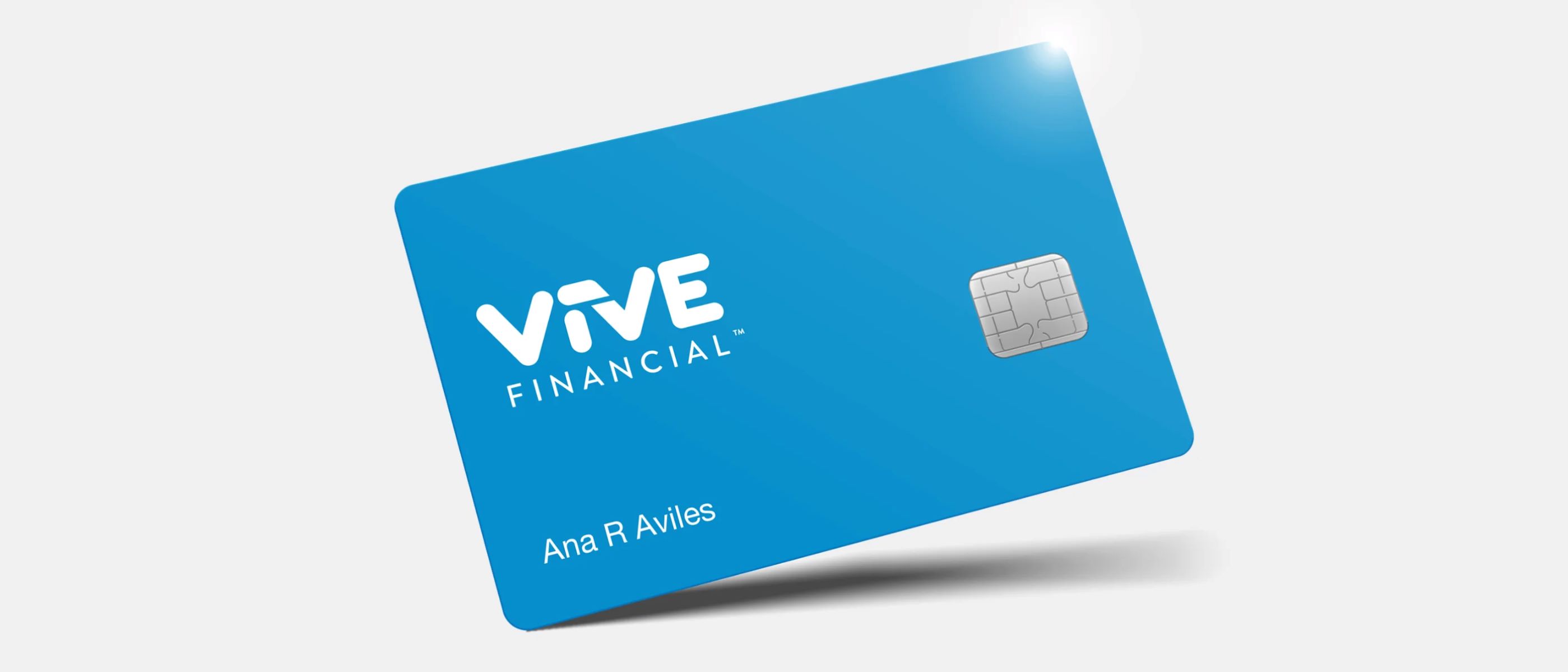

Finance
What Are Chargebacks In Accounting
Modified: February 21, 2024
Learn about chargebacks in accounting and how they impact your finances. Explore the definition, process, and importance of chargebacks in managing your finances.
(Many of the links in this article redirect to a specific reviewed product. Your purchase of these products through affiliate links helps to generate commission for LiveWell, at no extra cost. Learn more)
Table of Contents
Introduction
Welcome to the world of finance, where accurate accounting and financial management play a crucial role in the success of businesses. Within the realm of accounting, there are various concepts and terms that are important to understand, one of which is chargebacks. In this article, we will delve into the world of chargebacks in accounting, exploring their definition, significance, types, process, challenges, strategies to minimize, and their impact on financial statements.
Chargebacks are a fundamental aspect of accounting that businesses encounter in their day-to-day operations. They serve as a mechanism to rectify discrepancies, resolve disputes, and ensure the accuracy and integrity of financial transactions. Understanding the concept of chargebacks is essential for both individuals and organizations involved in financial activities.
Throughout history, chargebacks have played a critical role in maintaining fairness and trust within financial transactions. With the rise of e-commerce and digital payment platforms, the importance of chargebacks has significantly increased. Consumers and businesses alike rely on chargebacks to protect themselves from fraudulent activities, unrecognized transactions, or unsatisfactory goods and services.
In simple terms, chargebacks refer to the process of reversing a transaction, typically initiated by the buyer, in response to a dispute or problem. This may occur when a customer disputes a charge on their credit card statement, claims that they didn’t receive the product or service as promised, or identifies fraudulent activity on their account. The chargeback process allows the customer to request a refund or a resolution to the issue, while also providing a mechanism for businesses to investigate and respond to such claims.
Chargebacks are not limited to online transactions. They are also prevalent in traditional brick-and-mortar businesses. For example, if a customer receives a damaged item or experiences poor service at a restaurant, they may request a chargeback through their payment provider or bank.
In the next section, we will explore the importance of chargebacks in accounting and how they contribute to maintaining transparency, trust, and balance in financial transactions. Stay tuned!
Definition of Chargebacks
Before delving into the intricacies of chargebacks in accounting, let’s start by understanding the basic definition of chargebacks. In financial terms, a chargeback refers to the reversal of a payment transaction that occurs when a customer disputes a charge made on their credit or debit card.
When a customer initiates a chargeback, they are essentially asking their credit card issuer or bank to intervene and reverse the transaction. The customer may have valid reasons for disputing the charge, such as unauthorized or fraudulent activity, goods not received, or receiving faulty or unsatisfactory products or services.
Chargebacks are designed to provide a layer of protection and recourse for consumers against fraudulent or unfair business practices. They allow customers to request refunds or resolutions for transactions that they believe are in error or were not fulfilled as promised. Additionally, chargebacks help maintain customer confidence in the payment system and foster trust between buyers and merchants.
For businesses, chargebacks can have significant implications. In addition to potentially losing revenue from the disputed transaction, they may also face additional fees and penalties imposed by the payment processor or acquiring bank. Excessive chargebacks can even lead to the suspension or termination of a merchant’s account, which can have a severe impact on their ability to conduct business.
It’s important to note that not all chargebacks are valid or legitimate. Some customers may abuse the chargeback process as a way to get a refund without going through the proper channels, resulting in a loss for the business. This is known as friendly fraud or chargeback fraud and poses a significant challenge for merchants.
Overall, chargebacks are a crucial aspect of financial management, safeguarding the interests of both consumers and businesses. They provide a mechanism for resolving disputes, ensuring fair and ethical practices, and maintaining the integrity of financial transactions.
Now that we have a clear understanding of what chargebacks are, let’s explore their importance in accounting and how they contribute to maintaining financial transparency and accuracy.
Importance of Chargebacks in Accounting
Chargebacks are of significant importance in the field of accounting as they serve multiple purposes that contribute to the integrity and accuracy of financial records. Let’s explore the key reasons why chargebacks are crucial in accounting:
- Dispute Resolution: Chargebacks provide a mechanism for resolving disputes between customers and businesses. If a customer believes that a transaction was unauthorized, fraudulent, or did not meet their expectations, they can initiate a chargeback. This allows for a fair and transparent process where the issue can be investigated, and a resolution can be reached.
- Financial Accuracy: Chargebacks play a role in ensuring the accuracy of financial records. When a chargeback occurs, it triggers an adjustment in the financial statements, reflecting the reversal of the transaction. This helps in maintaining the accuracy and reliability of financial information, which is vital for decision-making and financial analysis.
- Fraud Detection and Prevention: Chargebacks act as a tool for detecting and preventing fraudulent activities. They serve as an early warning system, highlighting potential fraudulent transactions or unauthorized charges. By monitoring chargeback data, businesses can identify patterns of fraudulent behavior and implement measures to enhance security and prevent future incidents.
- Consumer Protection: Chargebacks provide a layer of protection for consumers, giving them confidence that their financial transactions are secure. They serve as a safety net, allowing customers to dispute transactions that they believe are fraudulent or not as described. This protection encourages consumer trust and fosters healthy business-consumer relationships.
- Maintaining Balance and Accountability: Chargebacks help in maintaining a balance between buyers and sellers. They hold businesses accountable for their actions, ensuring that they deliver on their promises and provide satisfactory goods or services. Chargebacks serve as a deterrent against unethical practices, promoting fair and transparent business transactions.
As you can see, chargebacks are not just a means for refunding customers; they play a crucial role in maintaining financial integrity, combating fraud, resolving disputes, and fostering trust in the financial ecosystem. Businesses that effectively manage chargebacks demonstrate a commitment to customer satisfaction and financial accountability.
Now that we understand the importance of chargebacks in accounting, let’s dig deeper into the different types of chargebacks that businesses may encounter in their operations.
Types of Chargebacks
Chargebacks can arise from various situations and can be categorized into different types based on the nature of the dispute. Understanding the various types of chargebacks can help businesses better identify and address the specific challenges they may face. Let’s explore some common types of chargebacks:
- Unauthorized Transactions: This type of chargeback occurs when a customer claims that a transaction was made without their knowledge or consent. It could be a result of stolen payment information, identity theft, or a mistake in processing the transaction. Unauthorized transaction chargebacks are particularly significant in cases of credit card fraud.
- Non-delivery of Goods or Services: When customers do not receive the products or services they paid for, they may initiate a chargeback. This could happen if the goods were never shipped, the services were not provided as promised, or there was a significant delay in delivery. Non-delivery chargebacks aim to protect customers from fraudulent merchants or ensure they receive what they paid for.
- Quality or Misrepresentation: This type of chargeback occurs when customers receive products or services that do not meet their expectations or were misrepresented. It could be due to false advertising, misleading product descriptions, or receiving items that are significantly different from what was promised. Quality or misrepresentation chargebacks protect customers from deceptive practices and hold businesses accountable for upholding their claims.
- Duplicate or Overcharged Transactions: Chargebacks related to duplicate or overcharged transactions arise when customers notice multiple charges for the same product or service, or they are charged an incorrect amount. These chargebacks help rectify billing errors and ensure customers are not overcharged or billed for items they did not receive.
- Account Issues: Chargebacks can also occur due to account-related issues, such as a customer closing their account or disputing charges after a subscription or membership renewal. These chargebacks often require additional evidence from businesses to prove the validity of the charges and the customer’s ongoing agreement.
- Friendly Fraud: Friendly fraud chargebacks refer to cases where customers abuse the chargeback process for personal gain. These may occur when individuals make a purchase and then dispute the charge, claiming it was unauthorized, despite receiving the product or service. Friendly fraud poses a significant challenge for businesses as they need to differentiate between legitimate disputes and fraudulent claims.
These are just a few examples of the types of chargebacks that businesses may encounter in their operations. It is essential for businesses to carefully analyze and categorize chargebacks to identify patterns, address underlying issues, and implement proactive measures to reduce their occurrence.
Now that we have explored the different types of chargebacks, let’s move on to understanding the process of how chargebacks are initiated and resolved.
Process of Chargebacks
The process of chargebacks involves several steps and typically follows a predefined sequence. Understanding this process is crucial for businesses to effectively manage and respond to chargebacks. Let’s break down the typical process of chargebacks:
- Customer Disputes: The chargeback process begins when a customer disputes a transaction with their credit card issuer or bank. This can be done through various channels, such as online banking, customer service hotline, or by submitting a dispute form provided by the card issuer.
- Investigation: Once a customer initiates a chargeback, the payment processor or issuing bank will conduct an investigation into the disputed transaction. They will review the details provided by the customer, such as the reason for the dispute and any supporting evidence.
- Merchant Response: As part of the investigation, the payment processor or issuing bank will notify the merchant of the chargeback and provide them with an opportunity to respond. The merchant is given a specific timeframe to submit relevant documentation, such as proof of delivery, transaction records, or communication with the customer.
- Adjudication: Based on the information provided by both the customer and the merchant, the payment processor or issuing bank will evaluate the evidence and make a decision. They will determine whether the chargeback is valid and should be upheld or if it lacks sufficient evidence and should be reversed in favor of the merchant.
- Resolution: Once a decision has been reached, the payment processor or issuing bank will communicate the outcome to both the customer and the merchant. If the chargeback is upheld, the customer will receive a refund, and the merchant’s account will be debited for the disputed amount. If the chargeback is reversed, the customer will not receive a refund, and the funds will be returned to the merchant.
- Chargeback Fees: In addition to the disputed amount, merchants may be subject to chargeback fees imposed by the payment processor or acquiring bank. These fees are usually levied to cover the administrative costs associated with managing the chargeback process.
It is important for businesses to actively monitor and manage the chargeback process. This involves promptly responding to chargeback notifications, providing substantiating evidence, and maintaining clear records of transactions and customer interactions. By actively participating in the chargeback process, businesses can present their case effectively and increase the chances of favorable outcomes.
However, it is worth noting that the chargeback process can vary depending on the payment provider, card network rules, and local regulations. It is essential for businesses to familiarize themselves with the specific policies and guidelines relevant to their industry and jurisdiction.
Now that we understand the process involved in chargebacks, let’s address some common challenges that businesses face when dealing with chargebacks.
Common Challenges in Dealing with Chargebacks
While chargebacks serve as a mechanism for resolving disputes and maintaining financial integrity, businesses often face various challenges when dealing with them. Let’s explore some common challenges businesses encounter in the context of chargebacks:
- Friendly Fraud: One of the significant challenges businesses face is friendly fraud, where customers abuse the chargeback process for personal gain. This can result in financial losses for the business and an increase in chargeback ratios, impacting their reputation and ability to secure merchant accounts.
- Lack of Sufficient Evidence: Sometimes, businesses struggle to provide adequate evidence to challenge a chargeback. This can happen if they do not keep detailed transaction records, lack proof of delivery, or fail to document customer communication related to the transaction. Insufficient evidence can weaken the merchant’s case and result in unsuccessful chargeback disputes.
- Complex Dispute Resolution: Resolving chargebacks can be a time-consuming and complex process. Merchants are often required to navigate through different platforms or systems to gather information, respond to chargeback notifications within strict deadlines, and communicate with multiple parties involved, including customers, payment processors, and acquiring banks.
- High Chargeback Fees: Chargebacks are not only costly in terms of lost revenue but also due to the accompanying chargeback fees imposed by payment processors or acquiring banks. These fees can add up and significantly impact the profitability of businesses, especially if they experience a high volume of chargebacks.
- Difficulty in Disputing False Claims: Proving the validity of a chargeback dispute can be challenging, especially when dealing with false claims made by customers. Businesses must gather compelling evidence to refute the claims and demonstrate that the transaction was legitimate and fulfilled as promised.
- Impact on Cash Flow: Chargebacks can disrupt a business’s cash flow, particularly for smaller businesses that may operate with tighter financial margins. The delayed resolution of chargebacks can lead to uncertainty and hinder the timely allocation of resources for business operations and growth.
To overcome these challenges, businesses can implement strategies and best practices that focus on proactive fraud prevention, maintaining accurate records, and prompt dispute resolution. By understanding the common challenges associated with chargebacks, businesses can develop effective strategies to minimize their occurrence and mitigate their impact.
Now that we have explored the challenges, let’s move on to discuss strategies that businesses can employ to minimize chargebacks and protect their financial well-being.
Strategies to Minimize Chargebacks
Chargebacks can have a significant impact on businesses, both financially and operationally. Implementing strategies to minimize chargebacks is crucial for protecting the business’s financial well-being and reputation. Here are some effective strategies that businesses can employ:
- Clear and Transparent Billing: Provide detailed and accurate descriptions of products or services, including pricing, shipping information, and return policies. This will help manage customer expectations and reduce instances of dissatisfaction or misunderstandings that could lead to chargebacks.
- Robust Customer Support: Offer reliable and easily accessible customer support channels to address any issues or concerns promptly. Providing excellent customer service can prevent customers from resorting to chargebacks as their first course of action when faced with problems.
- Secure Payment Processing: Implement reliable payment systems with fraud detection and prevention tools. This helps minimize the occurrence of fraudulent transactions and protects sensitive customer payment information.
- Effective Communication: Maintain open communication channels with customers to resolve any disputes or concerns before they escalate to chargebacks. Promptly address customer inquiries, provide order updates, and resolve any issues that arise during the transaction process.
- Clear Return and Refund Policies: Clearly communicate your return and refund policies to customers. Having a fair and transparent policy can help manage customer expectations and reduce the likelihood of chargebacks resulting from dissatisfaction with products or services.
- Fraud Monitoring and Prevention: Regularly monitor transactions for any suspicious activity or signs of fraud. Implement fraud prevention tools, such as address verification systems, CVV checks, and fraud scoring models, to identify and flag potentially fraudulent transactions.
- Order Tracking and Delivery Confirmation: Provide customers with tracking information and delivery confirmation to ensure transparency and accountability. This helps minimize non-delivery dispute chargebacks and provides evidence of successful delivery.
- Effective Dispute Resolution: Establish clear internal procedures for handling chargebacks and disputes. Train staff on how to properly respond to chargeback notifications, gather supporting evidence, and dispute invalid claims effectively.
- Continuous Monitoring and Analysis: Regularly review chargeback data and analytics to identify trends and patterns. This helps identify root causes of chargebacks and enables businesses to implement preventive measures to address specific issues.
- Collaboration with Payment Providers: Work closely with payment processors and acquiring banks to understand their chargeback policies, guidelines, and best practices. Leverage their expertise and resources to stay informed about the latest industry trends and fraud prevention techniques.
By implementing these strategies, businesses can minimize the occurrence of chargebacks, protect their revenue, and maintain positive relationships with customers. It is important to continuously assess and refine these strategies to adapt to evolving threats and changing customer expectations.
Now that we have explored strategies for minimizing chargebacks, let’s delve into the impact that chargebacks can have on the financial statements of a business.
Impact of Chargebacks on Financial Statements
Chargebacks can have a notable impact on the financial statements of a business, affecting several key components. Let’s explore the potential impact chargebacks can have on financial statements:
- Revenue: Chargebacks directly influence a business’s revenue. When a chargeback is upheld, the transaction amount is reversed, resulting in a decrease in reported revenue. High chargeback ratios can create significant fluctuations in revenue, potentially impacting financial projections and performance evaluations.
- Cost of Goods Sold (COGS): In cases where chargebacks are related to the non-delivery or return of goods, the associated COGS may need to be adjusted. If the goods have not been shipped or have been returned, the corresponding COGS will be reduced, reflecting the impact on profitability.
- Accounts Receivable: When a chargeback is initiated, the amount in question is typically deducted from the business’s accounts receivable. This adjustment reflects the reduction in expected cash inflow from the transaction and impacts the liquidity position of the business.
- Bad Debt Expense: In situations where chargebacks cannot be recovered or disputed successfully, businesses may need to recognize bad debt expense. This expense reflects the anticipated loss resulting from uncollectible funds and ensures accurate representation of the financial position.
- Return Reserves: Chargebacks related to returns or refunds may necessitate the establishment of return reserves. A return reserve is a provision set aside as an estimate for potential future returns or refunds, considering the historical return rate or expected return rate for specific products or services.
- Chargeback Fees: Chargeback fees, imposed by payment processors or acquiring banks, are typically considered operating expenses and should be accounted for in the financial statements. These fees reduce the profitability of the business and impact the accuracy of financial analysis.
- Financial Ratios: Chargebacks can significantly influence financial ratios, such as gross profit margin and net profit margin. The reduction in revenue and the additional expense incurred can distort these ratios, potentially affecting the assessment of the business’s financial health and performance by investors and creditors.
- Disclosure Requirements: Depending on the accounting standards and regulations applicable to the business, there may be specific disclosure requirements for chargebacks. Businesses might need to provide detailed information about the nature and impact of chargebacks in their financial statements, ensuring transparency and compliance.
It is crucial for businesses to accurately record and report chargebacks to ensure the financial statements provide a faithful representation of the business’s financial performance and position. Proper accounting for chargebacks allows stakeholders to make informed decisions and understand the implications on the business’s financial health.
Now that we have discussed the impact of chargebacks on financial statements, let’s conclude our exploration of chargebacks in accounting.
Conclusion
Chargebacks are a fundamental aspect of accounting that businesses encounter in their day-to-day operations. They serve as a mechanism for resolving disputes, protecting consumers, and maintaining the integrity of financial transactions. Understanding and effectively managing chargebacks is crucial for businesses to ensure financial accuracy, prevent fraud, and maintain customer trust.
In this article, we explored the definition of chargebacks and their importance in accounting. We discussed the various types of chargebacks that businesses may encounter, including unauthorized transactions, non-delivery of goods or services, quality or misrepresentation issues, and more. Understanding the different types of chargebacks helps businesses identify specific challenges and implement targeted strategies.
We also explored the process of chargebacks, from customer dispute to resolution, and highlighted common challenges faced by businesses in dealing with chargebacks. Friendly fraud, lack of evidence, complex dispute resolution, and high chargeback fees are some of the challenges businesses must navigate to protect their financial well-being.
To minimize chargebacks, businesses can employ various strategies, such as transparent billing, robust customer support, secure payment processing, effective communication, and fraud prevention measures. Implementing these strategies helps reduce the occurrence of chargebacks, protect revenue, and maintain positive customer relationships.
Chargebacks can have a significant impact on a business’s financial statements, affecting revenue, cost of goods sold, accounts receivable, and various financial ratios. Proper accounting and disclosure of chargebacks are essential for providing an accurate representation of the business’s financial performance and position.
In conclusion, chargebacks are a crucial facet of accounting, serving as a mechanism for dispute resolution, fraud prevention, and maintaining financial integrity. By understanding the concept of chargebacks, implementing effective strategies, and managing them proactively, businesses can navigate the complexities associated with chargebacks and safeguard their financial well-being.
Thank you for joining us on this exploration of chargebacks in accounting. We hope this article has provided valuable insights and guidance for dealing with chargebacks in the world of finance.














